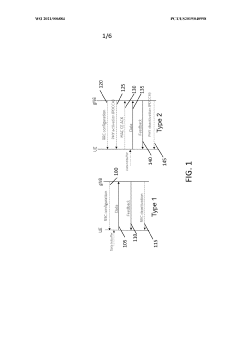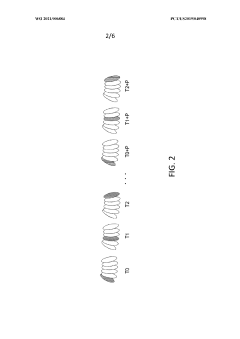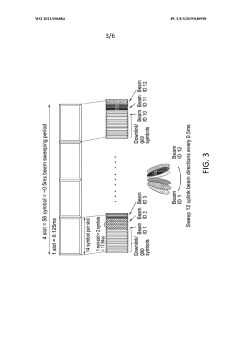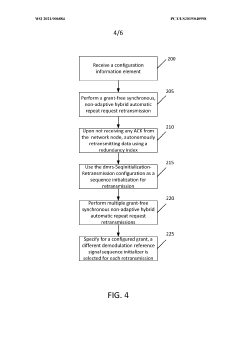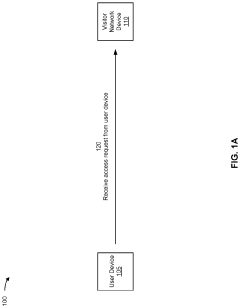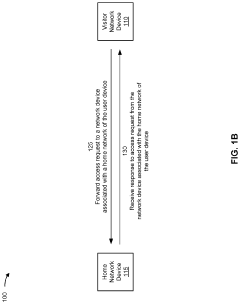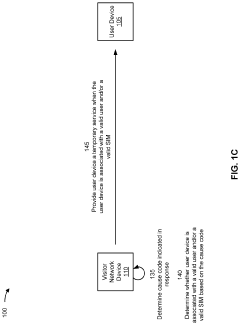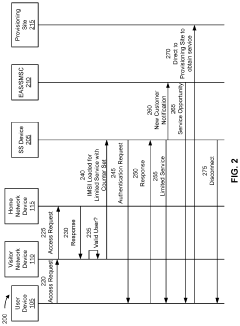The Impact of 5G UC on Real-Time Monitoring in Wildlife Conservation
JUL 18, 202510 MIN READ
Generate Your Research Report Instantly with AI Agent
Patsnap Eureka helps you evaluate technical feasibility & market potential.
5G UC Wildlife Monitoring Background and Objectives
The advent of 5G Ultra-Capacity (UC) technology marks a significant milestone in the evolution of wireless communication, offering unprecedented potential for real-time monitoring in wildlife conservation efforts. This technological leap builds upon previous generations of cellular networks, providing enhanced capabilities that address the unique challenges faced by conservationists in remote and often harsh environments.
The primary objective of implementing 5G UC in wildlife monitoring is to revolutionize data collection, transmission, and analysis processes. By leveraging the high-speed, low-latency, and massive connectivity features of 5G UC, researchers aim to gather more comprehensive and real-time data on animal behavior, habitat conditions, and environmental changes. This technological integration seeks to overcome limitations of traditional monitoring methods, which often suffer from delayed data transmission, limited coverage, and insufficient data resolution.
Historically, wildlife monitoring has relied on a combination of manual observation, radio telemetry, and more recently, satellite-based tracking systems. While these methods have provided valuable insights, they often fall short in delivering real-time, high-resolution data necessary for rapid response to conservation challenges. The introduction of 5G UC technology represents a paradigm shift, enabling the deployment of advanced sensors, high-definition cameras, and IoT devices capable of continuous, real-time data streaming from even the most remote locations.
The evolution of wildlife monitoring technologies aligns with broader trends in environmental conservation, emphasizing the need for data-driven decision-making and rapid response mechanisms. As global biodiversity faces unprecedented threats from climate change, habitat loss, and human activities, the integration of cutting-edge technologies like 5G UC becomes crucial in developing more effective conservation strategies.
Key objectives of implementing 5G UC in wildlife monitoring include enhancing the accuracy and timeliness of population surveys, improving the tracking of migratory patterns, facilitating early detection of poaching activities, and enabling real-time monitoring of ecosystem health indicators. Additionally, this technology aims to support more efficient resource allocation for conservation efforts by providing conservationists with actionable, real-time data.
The potential impact of 5G UC extends beyond mere data collection, promising to transform how researchers, policymakers, and the public engage with wildlife conservation. By enabling immersive, real-time experiences through virtual and augmented reality applications, 5G UC could foster greater public awareness and support for conservation initiatives. Furthermore, the technology's capacity for edge computing and AI-driven analytics opens new avenues for predictive modeling and proactive conservation measures.
As we explore the implications of 5G UC for wildlife monitoring, it is essential to consider both the technological opportunities and the challenges that may arise, including infrastructure deployment in remote areas, potential ecological impacts, and data privacy concerns. The successful integration of 5G UC into wildlife conservation efforts will require collaborative approaches, involving technologists, ecologists, policymakers, and local communities to ensure sustainable and ethical implementation.
The primary objective of implementing 5G UC in wildlife monitoring is to revolutionize data collection, transmission, and analysis processes. By leveraging the high-speed, low-latency, and massive connectivity features of 5G UC, researchers aim to gather more comprehensive and real-time data on animal behavior, habitat conditions, and environmental changes. This technological integration seeks to overcome limitations of traditional monitoring methods, which often suffer from delayed data transmission, limited coverage, and insufficient data resolution.
Historically, wildlife monitoring has relied on a combination of manual observation, radio telemetry, and more recently, satellite-based tracking systems. While these methods have provided valuable insights, they often fall short in delivering real-time, high-resolution data necessary for rapid response to conservation challenges. The introduction of 5G UC technology represents a paradigm shift, enabling the deployment of advanced sensors, high-definition cameras, and IoT devices capable of continuous, real-time data streaming from even the most remote locations.
The evolution of wildlife monitoring technologies aligns with broader trends in environmental conservation, emphasizing the need for data-driven decision-making and rapid response mechanisms. As global biodiversity faces unprecedented threats from climate change, habitat loss, and human activities, the integration of cutting-edge technologies like 5G UC becomes crucial in developing more effective conservation strategies.
Key objectives of implementing 5G UC in wildlife monitoring include enhancing the accuracy and timeliness of population surveys, improving the tracking of migratory patterns, facilitating early detection of poaching activities, and enabling real-time monitoring of ecosystem health indicators. Additionally, this technology aims to support more efficient resource allocation for conservation efforts by providing conservationists with actionable, real-time data.
The potential impact of 5G UC extends beyond mere data collection, promising to transform how researchers, policymakers, and the public engage with wildlife conservation. By enabling immersive, real-time experiences through virtual and augmented reality applications, 5G UC could foster greater public awareness and support for conservation initiatives. Furthermore, the technology's capacity for edge computing and AI-driven analytics opens new avenues for predictive modeling and proactive conservation measures.
As we explore the implications of 5G UC for wildlife monitoring, it is essential to consider both the technological opportunities and the challenges that may arise, including infrastructure deployment in remote areas, potential ecological impacts, and data privacy concerns. The successful integration of 5G UC into wildlife conservation efforts will require collaborative approaches, involving technologists, ecologists, policymakers, and local communities to ensure sustainable and ethical implementation.
Market Analysis for 5G UC in Conservation
The market for 5G UC (Ultra-Capacity) technology in wildlife conservation is experiencing rapid growth and transformation. As environmental concerns escalate globally, there is an increasing demand for advanced monitoring solutions to protect endangered species and ecosystems. The integration of 5G UC into conservation efforts presents a significant market opportunity, driven by the need for real-time, high-quality data collection and analysis in remote areas.
The potential market size for 5G UC in conservation is substantial. Conservation organizations, government agencies, and research institutions are key stakeholders investing in cutting-edge technologies to enhance their monitoring capabilities. The global wildlife monitoring market, which includes 5G UC applications, is projected to grow significantly in the coming years, fueled by increasing awareness of biodiversity loss and climate change impacts.
Several factors contribute to the rising demand for 5G UC in conservation. First, the technology's ability to transmit large volumes of data at high speeds enables real-time monitoring of wildlife movements, behavior patterns, and habitat conditions. This capability is crucial for rapid response to threats such as poaching or natural disasters. Second, the low latency of 5G UC supports the deployment of advanced sensors and IoT devices in remote locations, allowing for more comprehensive and accurate data collection.
The market for 5G UC in conservation is also driven by the technology's potential to revolutionize research methodologies. Scientists and conservationists can now access and analyze vast amounts of data in near real-time, leading to more informed decision-making and effective conservation strategies. This shift towards data-driven conservation is attracting significant investment from both public and private sectors.
Geographically, the market for 5G UC in conservation is expanding globally, with particular growth in regions rich in biodiversity. Developing countries with extensive wildlife reserves are increasingly adopting advanced technologies to protect their natural resources. Meanwhile, developed nations are investing in 5G UC to enhance existing conservation infrastructure and support international conservation efforts.
The competitive landscape of this market is diverse, involving telecommunications companies, conservation technology providers, and specialized wildlife monitoring equipment manufacturers. Collaborations between tech giants and conservation organizations are becoming more common, driving innovation and market growth. These partnerships are crucial for developing tailored solutions that meet the specific needs of wildlife conservation efforts.
Despite the promising outlook, challenges remain in the widespread adoption of 5G UC for conservation. These include the high cost of infrastructure deployment in remote areas, concerns about the environmental impact of 5G installations, and the need for specialized training for conservation personnel. Addressing these challenges will be critical for realizing the full market potential of 5G UC in wildlife conservation.
The potential market size for 5G UC in conservation is substantial. Conservation organizations, government agencies, and research institutions are key stakeholders investing in cutting-edge technologies to enhance their monitoring capabilities. The global wildlife monitoring market, which includes 5G UC applications, is projected to grow significantly in the coming years, fueled by increasing awareness of biodiversity loss and climate change impacts.
Several factors contribute to the rising demand for 5G UC in conservation. First, the technology's ability to transmit large volumes of data at high speeds enables real-time monitoring of wildlife movements, behavior patterns, and habitat conditions. This capability is crucial for rapid response to threats such as poaching or natural disasters. Second, the low latency of 5G UC supports the deployment of advanced sensors and IoT devices in remote locations, allowing for more comprehensive and accurate data collection.
The market for 5G UC in conservation is also driven by the technology's potential to revolutionize research methodologies. Scientists and conservationists can now access and analyze vast amounts of data in near real-time, leading to more informed decision-making and effective conservation strategies. This shift towards data-driven conservation is attracting significant investment from both public and private sectors.
Geographically, the market for 5G UC in conservation is expanding globally, with particular growth in regions rich in biodiversity. Developing countries with extensive wildlife reserves are increasingly adopting advanced technologies to protect their natural resources. Meanwhile, developed nations are investing in 5G UC to enhance existing conservation infrastructure and support international conservation efforts.
The competitive landscape of this market is diverse, involving telecommunications companies, conservation technology providers, and specialized wildlife monitoring equipment manufacturers. Collaborations between tech giants and conservation organizations are becoming more common, driving innovation and market growth. These partnerships are crucial for developing tailored solutions that meet the specific needs of wildlife conservation efforts.
Despite the promising outlook, challenges remain in the widespread adoption of 5G UC for conservation. These include the high cost of infrastructure deployment in remote areas, concerns about the environmental impact of 5G installations, and the need for specialized training for conservation personnel. Addressing these challenges will be critical for realizing the full market potential of 5G UC in wildlife conservation.
5G UC Technology Status and Challenges
The current status of 5G UC (Ultra-Capacity) technology in wildlife conservation monitoring presents both significant advancements and notable challenges. 5G UC networks, with their enhanced capabilities in data transmission speed, low latency, and massive device connectivity, offer unprecedented opportunities for real-time wildlife monitoring.
In terms of technological progress, 5G UC has demonstrated remarkable improvements in data transfer rates, reaching speeds up to 20 Gbps. This high-speed connectivity enables the rapid transmission of high-resolution images, videos, and sensor data from remote wildlife areas to research centers. The ultra-low latency of 5G UC, typically less than 1 millisecond, facilitates near-instantaneous communication between monitoring devices and control centers, crucial for timely interventions in wildlife protection.
The ability of 5G UC to support a massive number of connected devices per square kilometer has revolutionized the scale of wildlife monitoring operations. Conservation areas can now deploy a dense network of sensors, cameras, and tracking devices, providing comprehensive coverage and detailed insights into animal behavior and ecosystem dynamics.
However, the implementation of 5G UC in wildlife conservation faces several challenges. The primary obstacle is the limited infrastructure in remote and rugged terrains where many wildlife habitats are located. Deploying and maintaining 5G UC networks in these areas require significant investment and logistical support, which may not always be economically viable.
Energy consumption is another critical challenge. While 5G UC offers improved energy efficiency compared to previous generations, the power requirements for continuous operation of numerous connected devices in remote locations pose substantial difficulties. Developing sustainable power solutions, such as advanced solar or wind energy systems, is crucial for long-term viability.
Data security and privacy concerns also present significant challenges. The vast amount of sensitive data collected through 5G UC-enabled monitoring systems requires robust cybersecurity measures to prevent unauthorized access and potential misuse of wildlife location information by poachers or illegal traders.
Interoperability issues between different monitoring systems and devices from various manufacturers can hinder the seamless integration and operation of comprehensive wildlife monitoring networks. Standardization efforts are ongoing but remain a challenge in the rapidly evolving 5G UC ecosystem.
Lastly, the potential environmental impact of 5G UC infrastructure on wildlife habitats is a growing concern. The installation of towers, antennas, and other equipment may disrupt natural ecosystems. Balancing the benefits of advanced monitoring capabilities with minimal ecological disturbance is a complex challenge that requires careful planning and ongoing research.
In terms of technological progress, 5G UC has demonstrated remarkable improvements in data transfer rates, reaching speeds up to 20 Gbps. This high-speed connectivity enables the rapid transmission of high-resolution images, videos, and sensor data from remote wildlife areas to research centers. The ultra-low latency of 5G UC, typically less than 1 millisecond, facilitates near-instantaneous communication between monitoring devices and control centers, crucial for timely interventions in wildlife protection.
The ability of 5G UC to support a massive number of connected devices per square kilometer has revolutionized the scale of wildlife monitoring operations. Conservation areas can now deploy a dense network of sensors, cameras, and tracking devices, providing comprehensive coverage and detailed insights into animal behavior and ecosystem dynamics.
However, the implementation of 5G UC in wildlife conservation faces several challenges. The primary obstacle is the limited infrastructure in remote and rugged terrains where many wildlife habitats are located. Deploying and maintaining 5G UC networks in these areas require significant investment and logistical support, which may not always be economically viable.
Energy consumption is another critical challenge. While 5G UC offers improved energy efficiency compared to previous generations, the power requirements for continuous operation of numerous connected devices in remote locations pose substantial difficulties. Developing sustainable power solutions, such as advanced solar or wind energy systems, is crucial for long-term viability.
Data security and privacy concerns also present significant challenges. The vast amount of sensitive data collected through 5G UC-enabled monitoring systems requires robust cybersecurity measures to prevent unauthorized access and potential misuse of wildlife location information by poachers or illegal traders.
Interoperability issues between different monitoring systems and devices from various manufacturers can hinder the seamless integration and operation of comprehensive wildlife monitoring networks. Standardization efforts are ongoing but remain a challenge in the rapidly evolving 5G UC ecosystem.
Lastly, the potential environmental impact of 5G UC infrastructure on wildlife habitats is a growing concern. The installation of towers, antennas, and other equipment may disrupt natural ecosystems. Balancing the benefits of advanced monitoring capabilities with minimal ecological disturbance is a complex challenge that requires careful planning and ongoing research.
Current 5G UC Solutions for Wildlife Monitoring
01 5G network monitoring and management
This technology focuses on real-time monitoring and management of 5G networks, including performance analysis, fault detection, and resource optimization. It enables network operators to maintain high-quality service and quickly respond to issues in the ultra-connected environment of 5G.- Real-time network monitoring in 5G UC systems: 5G Ultra-Capacity (UC) networks require advanced real-time monitoring solutions to ensure optimal performance and reliability. These systems continuously track network parameters, traffic patterns, and quality of service metrics to identify and address issues promptly. Real-time monitoring enables quick detection of anomalies, efficient resource allocation, and proactive maintenance of 5G UC infrastructure.
- Data analytics and visualization for 5G UC monitoring: Advanced data analytics and visualization tools are crucial for effective 5G UC real-time monitoring. These solutions process vast amounts of network data, providing insights through intuitive dashboards and reports. Machine learning algorithms are often employed to predict potential issues and optimize network performance based on historical and real-time data.
- Edge computing for 5G UC monitoring: Edge computing plays a significant role in 5G UC real-time monitoring by processing data closer to the source. This approach reduces latency and enables faster response times to network events. Edge nodes can perform local analytics and filtering, sending only relevant information to central monitoring systems, thus improving overall efficiency and scalability of the monitoring infrastructure.
- Security and privacy in 5G UC monitoring: Ensuring security and privacy in 5G UC real-time monitoring is critical due to the sensitive nature of network data. Monitoring systems implement robust encryption, access control, and data anonymization techniques to protect against unauthorized access and data breaches. Additionally, compliance with data protection regulations is a key consideration in the design of these monitoring solutions.
- Integration of AI and machine learning in 5G UC monitoring: Artificial Intelligence (AI) and machine learning technologies are increasingly integrated into 5G UC real-time monitoring systems. These technologies enable predictive maintenance, automated fault detection, and intelligent resource allocation. AI-driven monitoring can identify complex patterns and anomalies that might be missed by traditional monitoring approaches, leading to improved network performance and reliability.
02 Real-time data processing and analytics
This aspect involves the collection, processing, and analysis of large volumes of data in real-time within 5G networks. It utilizes advanced algorithms and machine learning techniques to extract meaningful insights, predict network behavior, and support decision-making for network optimization.Expand Specific Solutions03 Edge computing for 5G monitoring
Edge computing is employed to enhance real-time monitoring capabilities in 5G networks. By processing data closer to the source, it reduces latency and enables faster response times for critical monitoring tasks, improving overall network performance and reliability.Expand Specific Solutions04 User equipment (UE) monitoring in 5G networks
This technology focuses on monitoring and managing user equipment in 5G networks. It includes tracking device performance, connectivity status, and resource utilization to ensure optimal user experience and efficient network operation.Expand Specific Solutions05 Security and privacy in 5G monitoring
This aspect addresses the security and privacy concerns in 5G network monitoring. It includes techniques for secure data transmission, encryption, and access control to protect sensitive information while maintaining effective real-time monitoring capabilities.Expand Specific Solutions
Key Players in 5G UC and Conservation Tech
The impact of 5G UC on real-time monitoring in wildlife conservation is at an early stage of development, with the market showing significant growth potential. The technology's maturity is rapidly advancing, driven by collaborations between academic institutions and industry leaders. Companies like Ericsson, Nokia, and ZTE are at the forefront, developing 5G infrastructure essential for wildlife monitoring applications. Universities such as Zhejiang University and King Abdullah University of Science & Technology are contributing research expertise. The integration of 5G with IoT and AI technologies by firms like IBM and Samsung is enhancing real-time data collection and analysis capabilities in conservation efforts.
Telefonaktiebolaget LM Ericsson
Technical Solution: Ericsson has developed a comprehensive 5G UC (Ultra-Capacity) solution for wildlife conservation monitoring. Their approach integrates high-bandwidth, low-latency 5G networks with advanced IoT sensors and AI-powered analytics. This system enables real-time tracking of animal movements, detection of poaching activities, and monitoring of environmental conditions. Ericsson's solution utilizes edge computing to process data locally, reducing latency and enabling immediate responses to potential threats. The company has also implemented energy-efficient radio units and sustainable power solutions to minimize the environmental impact of the monitoring infrastructure[1][3]. Their 5G UC technology supports massive machine-type communications (mMTC), allowing for the deployment of thousands of sensors across vast conservation areas[2].
Strengths: Global 5G expertise, end-to-end solution integration, advanced AI analytics. Weaknesses: High initial infrastructure costs, potential challenges in remote area deployments.
Nokia Solutions & Networks Oy
Technical Solution: Nokia has developed a 5G UC-based wildlife conservation monitoring system that leverages their expertise in network infrastructure and IoT technologies. Their solution incorporates high-capacity 5G networks with advanced sensor technologies and drone-based monitoring. Nokia's system utilizes network slicing to prioritize critical conservation data, ensuring real-time transmission of vital information. The company has also implemented AI-driven predictive analytics to identify patterns in animal behavior and potential environmental threats. Nokia's 5G UC technology supports ultra-reliable low-latency communication (URLLC), enabling rapid response to emergency situations such as poaching attempts or natural disasters[4][5]. Additionally, they have developed specialized ruggedized equipment to withstand harsh environmental conditions in conservation areas.
Strengths: Robust network infrastructure, innovative drone integration, advanced network slicing capabilities. Weaknesses: Potential limitations in very remote areas, reliance on partner ecosystems for some specialized conservation technologies.
Core Innovations in 5G UC for Conservation
5g new radio ultra reliable low latency communications in millimeter wave spectrum
PatentWO2021006884A1
Innovation
- Implementing grant-free synchronous non-adaptive hybrid automatic repeat request (HARQ) retransmissions without a physical downlink control channel scheduling grant, using a new field in the configuration information element to specify usage and enable autonomous retransmissions on pre-configured radio resources, and employing Layer-1 encoding for differentiating initial transmissions from retransmissions.
Systems and methods for temporary service provisioning
PatentActiveUS11800596B2
Innovation
- A visitor network device provides temporary service to user devices not authorized for roaming by forwarding requests to the home network, determining validity, and offering limited-time or data-limited access to enable communication until the user can authorize roaming service.
Environmental Impact of 5G UC Deployment
The deployment of 5G UC (Ultra-Capacity) networks for real-time wildlife monitoring presents both opportunities and challenges for environmental conservation. While this technology offers unprecedented capabilities for data collection and analysis, its implementation also raises concerns about potential ecological impacts.
The installation of 5G UC infrastructure in natural habitats requires careful consideration. The construction of new cell towers and the expansion of existing ones may lead to habitat fragmentation and disturbance of wildlife. This is particularly critical in sensitive ecosystems or protected areas where even minor alterations can have significant consequences on local flora and fauna.
Electromagnetic radiation emitted by 5G UC networks is another area of concern. Although current research suggests that the levels of radiation from 5G are within safe limits for human exposure, the long-term effects on wildlife remain uncertain. Some studies indicate that electromagnetic fields may affect animal behavior, migration patterns, and reproductive cycles, particularly in species that rely on Earth's magnetic field for navigation.
However, the environmental impact of 5G UC deployment is not solely negative. The enhanced connectivity and data transmission capabilities can significantly improve conservation efforts. Real-time monitoring systems powered by 5G UC can provide conservationists with immediate insights into animal movements, habitat conditions, and potential threats, enabling rapid response to environmental emergencies.
Moreover, the increased efficiency of 5G networks may lead to a reduction in the overall number of physical monitoring devices required in the field. This could potentially decrease the direct human presence in sensitive areas, minimizing disturbance to wildlife and ecosystems.
The energy consumption of 5G UC networks is another factor to consider. While 5G technology is designed to be more energy-efficient per unit of data transmitted, the overall increase in data traffic and the need for more base stations could lead to higher total energy consumption. This raises questions about the carbon footprint of 5G UC deployment in remote conservation areas and the need for sustainable power solutions.
To mitigate potential negative impacts, careful planning and implementation strategies are crucial. This includes conducting thorough environmental impact assessments before deployment, using existing infrastructure where possible to minimize new construction, and implementing wildlife-friendly design principles for necessary new installations. Additionally, ongoing monitoring of wildlife populations and ecosystem health in areas with 5G UC deployment is essential to identify and address any unforeseen consequences.
In conclusion, while 5G UC technology offers significant benefits for wildlife conservation through enhanced real-time monitoring capabilities, its deployment must be approached with caution and responsibility. Balancing the technological advantages with environmental preservation requires a collaborative effort between conservationists, technology experts, and policymakers to ensure that the implementation of 5G UC networks supports rather than hinders wildlife conservation efforts.
The installation of 5G UC infrastructure in natural habitats requires careful consideration. The construction of new cell towers and the expansion of existing ones may lead to habitat fragmentation and disturbance of wildlife. This is particularly critical in sensitive ecosystems or protected areas where even minor alterations can have significant consequences on local flora and fauna.
Electromagnetic radiation emitted by 5G UC networks is another area of concern. Although current research suggests that the levels of radiation from 5G are within safe limits for human exposure, the long-term effects on wildlife remain uncertain. Some studies indicate that electromagnetic fields may affect animal behavior, migration patterns, and reproductive cycles, particularly in species that rely on Earth's magnetic field for navigation.
However, the environmental impact of 5G UC deployment is not solely negative. The enhanced connectivity and data transmission capabilities can significantly improve conservation efforts. Real-time monitoring systems powered by 5G UC can provide conservationists with immediate insights into animal movements, habitat conditions, and potential threats, enabling rapid response to environmental emergencies.
Moreover, the increased efficiency of 5G networks may lead to a reduction in the overall number of physical monitoring devices required in the field. This could potentially decrease the direct human presence in sensitive areas, minimizing disturbance to wildlife and ecosystems.
The energy consumption of 5G UC networks is another factor to consider. While 5G technology is designed to be more energy-efficient per unit of data transmitted, the overall increase in data traffic and the need for more base stations could lead to higher total energy consumption. This raises questions about the carbon footprint of 5G UC deployment in remote conservation areas and the need for sustainable power solutions.
To mitigate potential negative impacts, careful planning and implementation strategies are crucial. This includes conducting thorough environmental impact assessments before deployment, using existing infrastructure where possible to minimize new construction, and implementing wildlife-friendly design principles for necessary new installations. Additionally, ongoing monitoring of wildlife populations and ecosystem health in areas with 5G UC deployment is essential to identify and address any unforeseen consequences.
In conclusion, while 5G UC technology offers significant benefits for wildlife conservation through enhanced real-time monitoring capabilities, its deployment must be approached with caution and responsibility. Balancing the technological advantages with environmental preservation requires a collaborative effort between conservationists, technology experts, and policymakers to ensure that the implementation of 5G UC networks supports rather than hinders wildlife conservation efforts.
Data Privacy and Security in Wildlife Tracking
The integration of 5G UC technology in wildlife conservation efforts has raised significant concerns regarding data privacy and security in wildlife tracking. As real-time monitoring systems become more sophisticated and data-intensive, the need for robust protection measures has become paramount. The vast amount of sensitive information collected through wildlife tracking devices, including location data, behavioral patterns, and physiological metrics, requires stringent safeguards to prevent unauthorized access and misuse.
One of the primary challenges in ensuring data privacy and security in wildlife tracking is the remote nature of data collection. Tracking devices often operate in isolated areas with limited connectivity, making it difficult to implement traditional security protocols. The advent of 5G UC technology has improved connectivity but also increased the potential attack surface for malicious actors. To address this, encryption techniques specifically designed for low-power, long-range communication are being developed and implemented.
Another critical aspect of data protection in wildlife conservation is the management of access rights. Researchers, conservationists, and government agencies often need to share data for collaborative efforts, but this sharing must be carefully controlled to prevent data breaches. Implementing robust authentication systems and granular access controls is essential to ensure that sensitive information is only accessible to authorized personnel.
The storage and transmission of wildlife tracking data also present unique challenges. With 5G UC enabling the collection of more frequent and detailed data points, the volume of information that needs to be securely stored and transmitted has increased exponentially. Cloud-based storage solutions with advanced encryption and redundancy measures are being adopted to address these challenges, but they must be carefully configured to comply with various international data protection regulations.
Ethical considerations surrounding the use of wildlife tracking data have also come to the forefront. There are concerns about the potential misuse of location data by poachers or other bad actors. To mitigate these risks, many conservation organizations are implementing data anonymization techniques and establishing strict protocols for data handling and dissemination. These measures aim to balance the need for scientific research and conservation efforts with the imperative to protect vulnerable species from exploitation.
As the field of wildlife conservation continues to leverage advanced technologies, the importance of cybersecurity in protecting both the data and the animals themselves cannot be overstated. Ongoing research and development in areas such as blockchain technology for data integrity, AI-powered anomaly detection for identifying security threats, and secure IoT protocols for wildlife tracking devices are all contributing to a more robust and resilient data protection ecosystem in wildlife conservation.
One of the primary challenges in ensuring data privacy and security in wildlife tracking is the remote nature of data collection. Tracking devices often operate in isolated areas with limited connectivity, making it difficult to implement traditional security protocols. The advent of 5G UC technology has improved connectivity but also increased the potential attack surface for malicious actors. To address this, encryption techniques specifically designed for low-power, long-range communication are being developed and implemented.
Another critical aspect of data protection in wildlife conservation is the management of access rights. Researchers, conservationists, and government agencies often need to share data for collaborative efforts, but this sharing must be carefully controlled to prevent data breaches. Implementing robust authentication systems and granular access controls is essential to ensure that sensitive information is only accessible to authorized personnel.
The storage and transmission of wildlife tracking data also present unique challenges. With 5G UC enabling the collection of more frequent and detailed data points, the volume of information that needs to be securely stored and transmitted has increased exponentially. Cloud-based storage solutions with advanced encryption and redundancy measures are being adopted to address these challenges, but they must be carefully configured to comply with various international data protection regulations.
Ethical considerations surrounding the use of wildlife tracking data have also come to the forefront. There are concerns about the potential misuse of location data by poachers or other bad actors. To mitigate these risks, many conservation organizations are implementing data anonymization techniques and establishing strict protocols for data handling and dissemination. These measures aim to balance the need for scientific research and conservation efforts with the imperative to protect vulnerable species from exploitation.
As the field of wildlife conservation continues to leverage advanced technologies, the importance of cybersecurity in protecting both the data and the animals themselves cannot be overstated. Ongoing research and development in areas such as blockchain technology for data integrity, AI-powered anomaly detection for identifying security threats, and secure IoT protocols for wildlife tracking devices are all contributing to a more robust and resilient data protection ecosystem in wildlife conservation.
Unlock deeper insights with Patsnap Eureka Quick Research — get a full tech report to explore trends and direct your research. Try now!
Generate Your Research Report Instantly with AI Agent
Supercharge your innovation with Patsnap Eureka AI Agent Platform!
